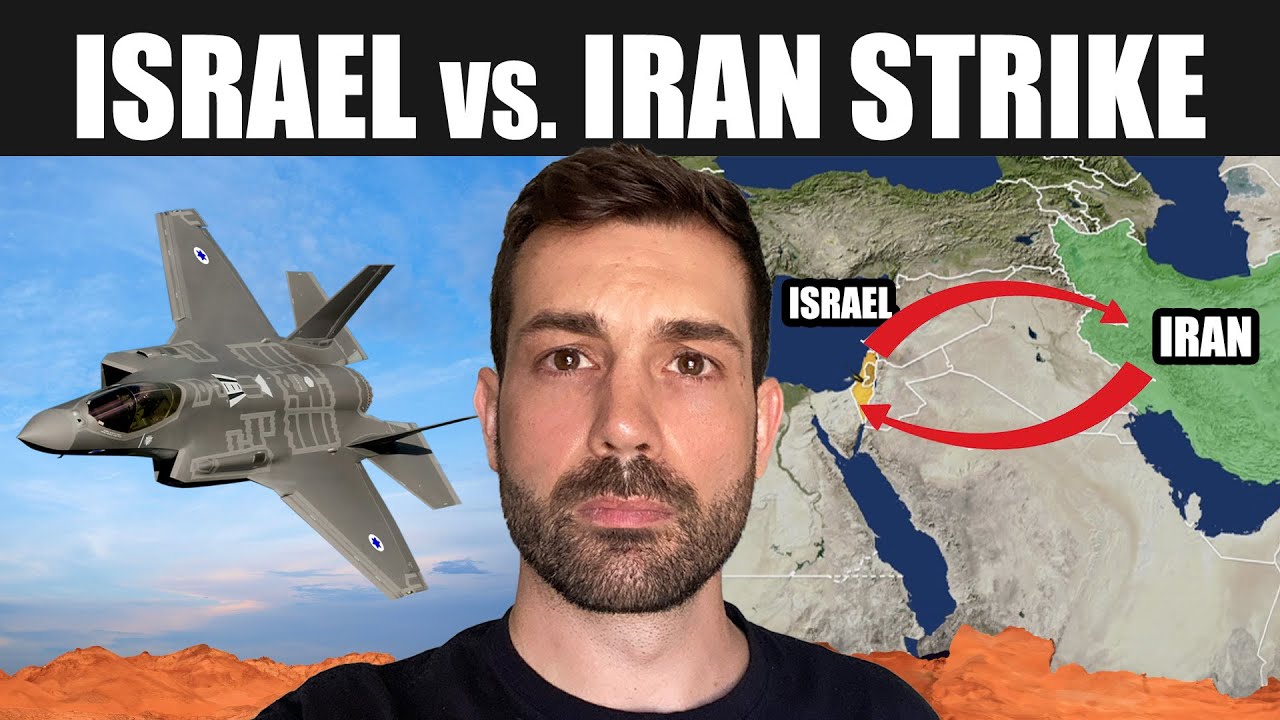The recent military exchanges between Israel and Iran mark a historic escalation, as both nations have engaged in direct strikes on each other’s territories for the first time. Iran’s attack on April 13 involved a sophisticated strike package, comprising 330 munitions, including ballistic missiles, cruise missiles, and kamikaze drones. This unprecedented offensive not only raises inquiries about Iran’s military capabilities but also invites scrutiny of what message Iran aimed to convey through this significant demonstration of force.
The analysis that follows will explore two predominant theories regarding Iran’s intentions behind this unprecedented military action. The first theory postulates that the strike served as a warning or limited assault, supported by claims of prior notifications to regional partners, while the second theory suggests a deliberate display of military might aimed at causing significant damage. Each perspective underscores the evolving military dynamics in the region and highlights the continued need for vigilance amid rising tensions.

Overview of the Israel-Iran Strikes
Historical context of military engagement between Israel and Iran
The relationship between Israel and Iran has been marked by animosity and ideological conflict since the 1979 Iranian Revolution, which saw the establishment of the Islamic Republic. Prior to this, the two nations maintained relatively amicable ties, primarily due to a mutual opposition to pan-Arab nationalism. However, the Islamic Republic’s anti-Zionist rhetoric transformed the dynamic into a hostile confrontation. Military engagements have been largely indirect, with both nations supporting proxy forces in conflicts across the Middle East. In a significant turn of events, April 13, 2023, heralded the first instance of direct military strikes against each other’s territories, a development that heightens the stakes in the region and underscores the potential for a new era of unresolved tensions.
Details of the April 13 attacks
On April 13, Iran launched a comprehensive military strike against Israel, deploying an impressive strike package comprising approximately 330 munitions consisting of 130 ballistic missiles, 30 cruise missiles, and 170 kamikaze drones. The scale and coordination of this attack signified not only a physical assault but also a calculated demonstration of military capabilities. The timing of the assault, coinciding with escalating regional tensions, suggested strategic intent behind Iran’s actions, revealing the complexities of military engagement in the context of longstanding rivalries.
Significance of direct military confrontation
The April 13 attacks are significant as they mark a watershed moment in Israeli-Iranian relations, transitioning from indirect confrontations to open hostilities. This shift provokes crucial questions regarding regional security dynamics, the nature of deterrence, and the evolving military calculus both nations must now assess. The implications extend beyond Israel and Iran; as these two states engage more openly, neighbors and allies will inevitably recalibrate their strategies. The potential for escalation grows, considering the already volatile geopolitical landscape of the Middle East.
Iran’s Offensive Military Capabilities
Composition of Iran’s strike package
Iran’s strike package during the April 13 attack showcased a multidimensional approach to warfare, blending various missile types and drones into a singular operational paradigm. The 130 ballistic missiles, 30 cruise missiles, and 170 kamikaze drones highlight Iran’s investment in diverse military capabilities, allowing for both high-velocity strikes and slow-moving, targeted attacks. This combination aims to overwhelm adversary defenses and create confusion, reflecting a sophisticated understanding of modern asymmetrical warfare.
Breakdown of munitions used in the attack
The munitions deployed in the attack were categorized as follows: ballistic missiles, which are typically high-speed and efficient for targeted strikes; cruise missiles, capable of maneuvering to evade defenses; and kamikaze drones, designed for precision and adaptability. Such a varied arsenal demonstrates Iran’s intention to maximize the likelihood of penetrating Israeli defenses, leveraging the strengths of each munition type to create a robust offensive operation. The selection process for these weapons further indicates a strategic alignment with Iran’s military doctrine, focusing on leveraging technology and doctrine to achieve strategic goals.
Assessment of Iran’s military technology and readiness
While the diversity and scale of the strike raise important questions regarding Iran’s military readiness, assessments of its technological capabilities paint a mixed picture. Despite the impressive array of munitions, concerns about the reliability and accuracy of Iranian weaponry persist. The fact that numerous missiles failed to reach their intended targets points to inherent challenges within Iran’s military manufacturing processes. However, the rapid development of its missile technology and drone capabilities signifies a growing readiness to engage in high-stakes confrontations.
Iran’s Intent: Theories and Speculations
Theory One: The Warning Shot
One speculative theory posits that the April 13 strikes were intended as a ‘warning shot’ to Israel, rather than an all-out offensive. Proponents argue that Iran’s decision to notify several regional actors—such as the U.S., Turkey, Jordan, and Iraq—72 hours ahead of the attack underscores an intention to communicate rather than escalate. This theory suggests that the strike was not a full demonstration of Iran’s capabilities but rather a limited engagement to signal its readiness for conflict should Israel continue its perceived provocations.
Theory Two: A Display of Military Power
Conversely, another theory suggests that the strike represented Iran’s intent to showcase its military prowess. The choice to deploy a significant number of munitions indicates a strategic decision to assert dominance and deter Israeli actions against Iranian interests. This theory posits that despite claims of limited intent, the scale and coordination of the attack were designed to send a clear message: Iran possesses formidable offensive capabilities, and it is prepared to exercise them should it deem necessary.
Analysis of Iran’s communication with regional actors
The nature and content of Iran’s communication with regional players added layers of complexity to its intent. While Iranian officials claimed that their advance notice served a diplomatic purpose, the United States denied receiving any prior warnings. This disconnect highlights the difficulties in interpreting Iran’s messaging and reflects the intricate and sometimes opaque web of international diplomacy. The implications of these communications could have broader consequences for regional security dynamics and diplomatic relations.
The Response from Israel and Allies
Immediate military response to the Iranian strike
In retaliation to the Iranian strikes, Israel executed a measured military response that involved a precision strike targeting Iranian air bases. This approach, characterized by a low-volume missile response aimed at degrading Iran’s operational capabilities without inciting a larger conflict, demonstrates Israel’s desire to balance deterrence with restraint. By avoiding a full-scale escalation, Israel aimed to signal its operational capabilities without inviting further retaliation or escalation.
Long-term implications for Israel’s defense strategy
The events of April 13 may catalyze a reevaluation of Israel’s defense strategy moving forward. The effectiveness of its missile defense systems, which had a reported interception rate of upwards of 93%, could bolster domestic confidence in national security measures. Concurrently, the strikes may compel Israel to further invest in enhancing its defense infrastructure and develop comprehensive strategies addressing the multidimensional threats posed by Iranian capabilities.
Role and response of the U.S. and other allies
The U.S. and its allies closely monitored the situation, reflecting a commitment to maintaining regional stability. With the U.S. asserting that it received no advance notification about the Iranian strikes, diplomatic and military channels were engaged to ensure a proper response and evaluate its implications for collective defense commitments in the Middle East. The potential for a recalibration of military arrangements, along with increased cooperation with regional partners, could emerge as a primary focus for U.S. foreign policy in response to this incident.

Analysis of the Strikes’ Impact on Regional Dynamics
Changes in Israel-Iran relations post-strike
The direct military engagement witnessed on April 13 has inevitable repercussions for Israel-Iran relations, solidifying a narrative of existential threat and confirmed hostilities. The attack has instigated a shift in how both nations perceive each other, moving from indirect confrontation to overt animosity. This fundamental shift necessitates recalibrated security policies and signals to both domestic and international audiences the seriousness of the evolving conflict.
Influence on other regional conflicts
The immediate repercussions of the Israel-Iran strikes extend beyond bilateral relations, potentially influencing broader conflicts across the region. Other nations may reevaluate their strategic alliances ought this shift in hostilities, creating ripples throughout regional power dynamics. Proxy engagements may intensify as countries reassess their positions in light of the direct confrontation, complicating existing conflicts and possibly sparking new ones.
Repercussions for U.S. foreign policy in the Middle East
The increasing tensions necessitate a reevaluation of U.S. foreign policy in the Middle East, as Washington grapples with the implications of the strikes on its regional alliances and security commitments. The U.S., traditionally an ally of Israel, is positioned to play a pivotal role in mediating tensions, promoting dialogue, and ensuring security cooperation amongst partners. However, the evolving landscape presents questions about the longevity and effectiveness of U.S. involvement, considering the unpredictability inherent in a newly hostile environment.
Casualties and Damage Assessment
Casualty figures and damage reports from the attacks
Following the April 13 strikes, reports indicate that casualties were relatively low, with minimal impact on civilian infrastructure in Israel. Estimates suggest that Israel’s preparedness and the effectiveness of its air defense systems significantly mitigated potential harm. However, the sustained threat posed by Iranian capabilities remains a compelling concern for Israeli officials, underscoring the necessity for continued vigilance in face of evolving threats.
Effectiveness of Israel’s air defense systems
Analyzing the effectiveness of Israel’s air defenses reveals a high interception rate of approximately 93%, highlighting the nation’s technological advancements in missile defense. While the interception rate appeared successful, the fact that approximately 86% of ballistic missiles that reached Israeli territory failed to inflict severe damage suggests limitations within Iran’s military technology as well. The incident serves as a crucial test of Israel’s defense mechanisms and may invigorate further enhancements and developments in defensive capabilities.
Comparative analysis of damage versus expectations
Despite the high number of munitions launched, the actual damage inflicted on Israeli territory fell short of expectations, prompting both nations to reassess their strategies and capabilities. Iran’s missiles, while formidable in numbers, encountered significant operational challenges, highlighting potential weaknesses in their manufacturing and operational quality. The ability to downplay the significance of the strikes reflects broader military posturing, as both countries navigate the outcomes of this historic engagement.

Strategic Lessons Learned
Military lessons for both Israel and Iran
The April 13 strikes offer valuable military lessons for both Israel and Iran, particularly in terms of evaluating operational capabilities and preparedness. For Iran, the results indicate that while its missile and drone technology is evolving, the operational execution may require further refinement. For Israel, the successful interception of the overwhelming majority of projectiles showcases the effectiveness of its air defense systems but raises concerns regarding future escalation and the potential for similar engagements.
Implications for future conflict scenarios
The dynamics established by the April 13 strikes necessitate a reevaluation of potential future conflict scenarios. With both nations engaging in open hostilities, the prospect of an arms race could escalate tensions and lead to a more unpredictable regional landscape. The need for strategic deterrence and clear communication lines will be paramount as both countries navigate the complexities of military engagement going forward.
Revisiting military strategies based on strike outcomes
In light of the April 13 attacks, it becomes essential for both Israeli and Iranian military strategists to revisit their operational doctrines. A focused analysis of the strike outcomes will pave the way for improved strategic frameworks that prioritize effective deterrence while incorporating lessons learned from the mutual engagements. The evolving military landscape will require agility in response plans, as both players assess the viable paths forward in an increasingly hostile environment.
International Reactions and Global Perspective
Reactions from major global powers
The international community reacted to the Israel-Iran strikes with significant attention and concern. Major global powers expressed apprehension about the potential escalation of military conflict, emphasizing the importance of diplomatic efforts to deescalate tensions. Reactions underscored the intricate balancing act that nations must navigate in the pursuit of regional stability, further complicating international diplomacy in the context of direct military confrontation.
Analysis of international diplomatic responses
In the aftermath of the April 13 strikes, the diplomatic responses from various nations reflected diverse perspectives on the engagements. While some countries condemned the strikes as provocations, others took a more measured approach, advocating for dialogue between Israel and Iran. This discrepancy in international responses underscores the multifaceted nature of diplomacy, which will become increasingly relevant as the situation evolves.
Impact on global security perceptions
The direct military confrontation between Israel and Iran alters global perceptions of security, particularly regarding Middle Eastern geopolitics. The incidents serve to amplify concerns about the stability of the region and the unpredictable nature of relations between major state actors. Consequently, a reevaluation of military readiness and defense strategies among other nations becomes essential to navigate the shifting security landscape.
Future Predictions: Trends and Tensions
Forecasting future military engagements
The likelihood of future military engagements between Israel and Iran can be anticipated in light of the escalating tensions following the April 13 strikes. Both nations seem positioned for ongoing confrontations, suggesting that military skirmishes could continue to unfold. Analysts predict a possible trend of cyclical escalation, where acts of aggression provoke counter-responses, pushing both nations to the brink of wider conflict.
Potential escalations and diplomatic resolutions
As the likelihood of future confrontations increases, so too does the necessity for renewed diplomatic efforts aimed at de-escalation. The international community’s engagement will play a critical role in mediating tensions between Iran and Israel. Diplomatic pathways that prioritize dialogue, rather than military posturing, could provide opportunities for resolution and mitigate further aggressive actions between the two states.
The role of external actors in mediating tensions
External actors, including the U.S. and major European powers, will be vital in shaping the trajectory of regional tensions. Facilitating dialogue between Israel and Iran, while maintaining strategic alliances, will require careful consideration of competing interests and pressures. The potential impact of external mediators on regional stability could shape the future of Israeli-Iranian relations, with implications for broader Middle Eastern political dynamics.
Conclusion
Summary of key insights from the Israel-Iran strikes
The April 13 strikes represent a significant turning point in the Israel-Iran conflict, marking the first instance of direct military engagement. These exchanges raise fundamental questions regarding military readiness, strategic intent, and regional dynamics, emphasizing that both nations are now navigating a more dangerous landscape.
Reflections on the evolving military landscape in the region
The developments of April 13 necessitate that both Israel and Iran reassess their military strategies and operational doctrines in light of the outcomes observed. The evolving dynamics, characterized by both direct confrontations and renewed tensions, underscore the challenges that lie ahead.
Calls for vigilance and defense preparedness in light of ongoing tensions
In light of the heightened risks, there is an increased impetus for both nations and their allies to monitor developments closely and enhance defense measures. The potential for further military engagements calls for vigilance and strategic preparedness, underscoring the urgent need for diplomatic initiatives to de-escalate tensions and foster dialogue, thereby contributing to a more stable and secure regional environment.
